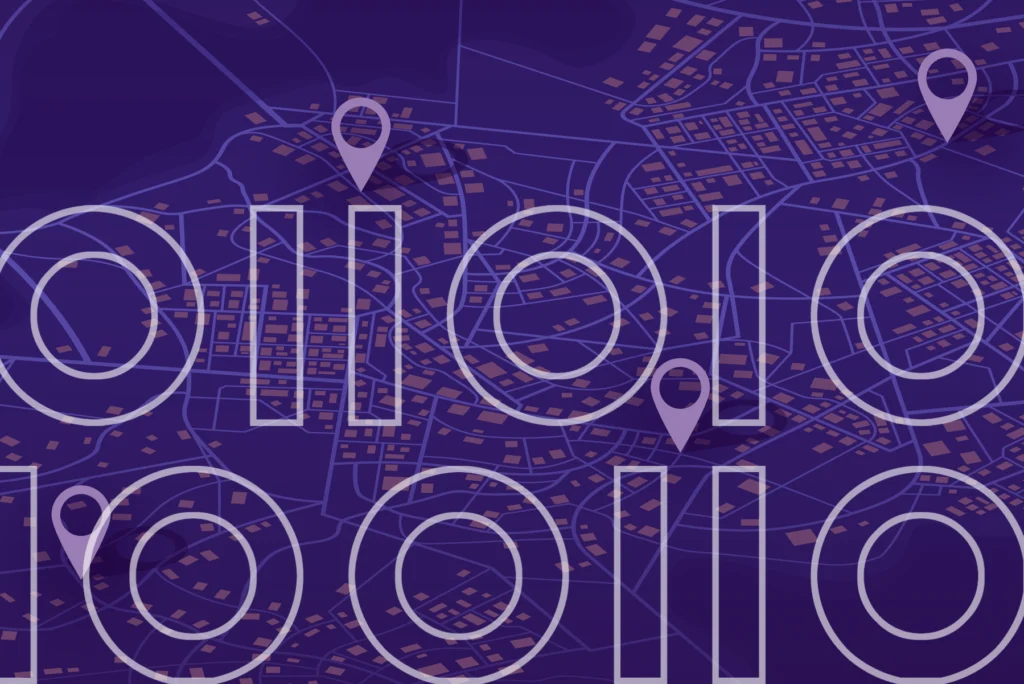Retail site selection is the process of assessing the suitability of a potential retail location and forecasting the financial return on that investment. By leveraging objective data and unbiased retail analytics, retailers are able to model the financial performance of potential locations with a high degree of accuracy.
While the “gut instinct” approach to site selection may work some of the time, particularly for smaller retailers with fewer locations, it simply cannot work at scale. And, it doesn’t serve companies well when they expand outside of a familiar existing market area. For companies with hundreds or thousands of stores, a data-driven approach is essential.
The role of digital transformation and retail analytics
As a range of new technologies is becoming more affordable, reliable, and ubiquitous, forward-looking companies are investing heavily in digital transformation. Location intelligence and other data-driven approaches are key elements of the bigger digital transformation picture.
The retail world has seen massive changes over the past decade. Amazon Prime has redefined customer expectations around delivery times. Plus, omnichannel has become that de facto standard for most large retailers (especially in the age of COVID-19).
Companies like Payless and JC Penney have experienced a dramatic decline in revenues, ultimately leading to bankruptcy. At one time, Payless had over 5,000 stores in multiple countries, but eventually filed for Chapter 11 bankruptcy, twice.
In 2020, Payless fully embraced digital transformation. It’s been reborn as a clicks-and-mortar operation, with innovative on-site components such as smart mirrors, touchscreen wall panels, and augmented reality sizing tools.
Digital transformation exists behind the scenes as well. For the retail industry, it’s playing a more important role than ever in site selection.
Trends in site selection
In an omnichannel world, site selection has fundamentally changed. Today’s customers expect a blend of digital and physical presence. They appreciate the convenience of digital interaction but they also want to have access to a person who can provide individualized attention when they need it.
Mobile devices
Mobile applications have changed retail dramatically. Mobile devices provide opportunities for detailed data collection, enabling retailers not only to identify traffic patterns, but to understand who is frequenting a particular area, and what their consumer and lifestyle preferences are. It gives brands a view of how much traffic competitors are drawing, what kind of people they’re attracting, and how many.
Online-only
Online-only competitors have exerted downward price pressure on brick-and-mortar retailers. As a response, retailers have developed innovative in-store experiences to differentiate themselves and continue attracting customers to their physical locations. This renewed focus on customer experience has been a trend across retail, hospitality, and financial services.
Non-traditional delivery channels
Growth and innovation in non-traditional delivery channels are having an impact as well. Companies like Uber, GrubHub, and others are providing new low-cost options for fast and convenient delivery. Companies like Amazon are rolling out proof-of-concept programs for drone delivery. If and when such programs are implemented, they will further change customer expectations and require retailers to adjust.
Retailers are responding to these trends by changing up their existing locations, closing some while opening new locations, or remodeling and reformatting existing stores. Banks, for example, have invested heavily in digital channels and have closed 13% of branch locations over the past decade. As banks have moved away from traditional branches, though, they have opened new locations built with richer, friendlier customer experiences in mind.
The common thread throughout all of these trends is the mix of digital and physical presence. Across all demographics, today’s customers have come to expect the best of both worlds. Decisions on physical site locations cannot be made in isolation; they must be made in the context of the omnichannel.
Watch our webcast
Retail Site Selection in a World of Digital Transformation
Discover the fundamental data, analytical methods and insights needed to locate high-performing sites regardless of the retail industry segment. To optimize doesn’t always mean to grow; it can also mean identifying where to reduce physical investment and drive channel shift strategies. Learn how to make data-driven retail decisions in the current, complex environment.
Data-driven site selection
A data-driven approach to retail site selection must incorporate information from a variety of sources and perspectives.
Historically, demographic data was modeled based on the residential characteristics of a neighborhood and/or daytime commercial traffic. In today’s world, that is no longer sufficient. Location intelligence provides retailers with dynamic demographic data, enabling them to see exactly which demographic groups are frequenting an area and when.
Location intelligence also provides detailed information about site attributes, including the parcel size, availability of parking, visibility, investment history, and more. By enriching existing corporate data with location attributes and traffic data, brands can develop a holistic view of potential and existing retail locations.
Location data remains highly relevant even after the site selection process is complete, however. By tracking important changes in a location’s surroundings, retailers can receive early notification of change events that could impact store profitability. This may include the emergence of new competitors, trigger events that indicate gentrification or decline, or changes to traffic patterns and demographics.
Bringing it all together
The science behind retail analytics and site selection involves some daunting challenges. First, it involves massive amounts of data. Second, geospatial data has unique attributes that make it fundamentally different from most data sets. Finally, location intelligence requires intensive computational resources.
Precisely addresses these challenges with a comprehensive set of tools and expertise for data management, data enrichment, integration, and location intelligence. With advanced analytics and a geospatial presentation layer, Precisely gives our clients a map view of target market locations, with the ability to overlay a rich array of data elements including mobile traffic for each area, and the ability to filter that traffic based on various demographic attributes such as purchasing power, for example.
To hear more about Precisely’s retail site selection practice and see our analytics tools in action, view our ondemand webcast: Retail Site Selection in a World of Digital Transformation.







